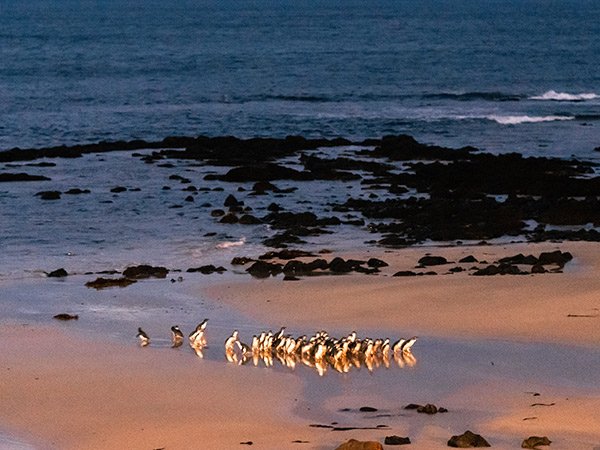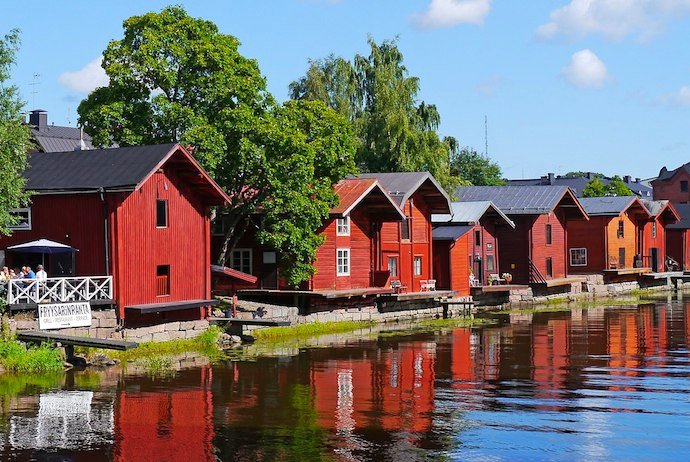We take a look at eight beautiful places you can visit that have inspired famous paintings.
Throughout history, artists have let their surroundings inspire their creativity, embodying their interpretation of reality in a canvas. Landscapes all over the world have set the scene for well-known works of art, subsequently, rendering these locales worship at an international level–enclaves such as Monet’s gardens in Giverny and the Café La Nuit in Arles painted by Van Gogh.
Here’s a look at eight inspiring places that you should consider adding to your bucket list.
1. Giverny: Claude Monet’s “Water Lilies”
Monet painted “The Water Lilies”, arguably his most iconic series images, at his home in Giverny, Normandy. The French artist drew inspiration from his own Japanese-inspired garden that he designed himself. Today, you can visit Monet’s perfectly preserved house and gardens.
2. Café La Nuit in Arles: Van Gogh’s “Café Terrace at Night”
Van Gogh’s “Café Terrace at Night” represents Café La Nuit, which the artist painted in 1888 during his time in Arles. This work perfectly captures the artist’s post-impressionist style, with the restaurant illuminated under a starry sky, silhouettes of customers drinking and the light of a street lamp projecting onto the cobblestones. This was one of the first works Van Gogh created after his relocation to Provence in search of inspiration and peace. If you visit Arles you too can sit on the same terrace where you’ll recognize the view from Van Gogh’s easel.
3. Colosseum in Rome: Giovanni Paolo Pannini’s “View of the Colosseum”
The famous Roman amphitheater and its surroundings inspired Giovanni Paolo Pannini’s “View of the Colosseum”. The Italian landscape painter moved to Rome in 1711 to study drawing and later produced multiple paintings depicting different emblems of the Italian capital. The painting shows the exterior of this iconic amphitheater which was inaugurated in 80 A.D. With a capacity for 50,000, the arena hosted entertainment for the people, such as fights between animals and gladiators–an absolute must visit when in Rome!
4. Venice: Claude Monet’s “The Grand Canal”
An unbelievable picturesque city, the unmistakable magic of Venice has inspired countless artists. One of the most distinctive features of this peculiar floating city is its network of canals, and that is precisely what Monet aimed to capture in one of his most famous paintings: “The Grand Canal”. This work stands out for its rigid compositional scheme and its incredible light characterized by vast chromatic range, which set Monet aside from other painters who had depicted Venice. A gondola ride on the canals of Venice is an indispensable way to experience La Serenissima!
5. Maison Fournaise restaurant in Chatou: Auguste Renoir’s “Luncheon of the Boating Party”
Renoir’s “Luncheon of the Boating Party” depicts a group of the painter’s friends lunching on the terrace of a restaurant in the town of Chatou on the outskirts of Paris. Maison Fournais opened in the 19th century and reopened in 1990, so travelers can still immerse themselves in an authentic impressionist backdrop.
6. Willy Lott’s Cottage in Suffolk: John Constable’s “Hay Wain”
In 1821, British artist John Constable painted an oil painting entitled “The Hay Wain”, which depicts a farmer and his horses pulling a hay cart down the river. The country house to the left belonged to Willy Lott. Built in the 16th century, the house still stands in Suffolk County, England today, and is part of the National Trust, which renovated it in the 1920s to make its appearance as similar as possible to Constable’s painting.
7. Moulin de la Galette in Paris: “Dance at Le Moulin de la Galette” by Auguste Renoir
One of Renoir’s most famous impressionist works, the painting is set at the Moulin de la Galette picnic area of Montmartre in Paris, where you can still absorb the bohemian life that emanates from the painting’s celebratory scene, characterized by a great sense of movement. Montmartre is full of treasures–in fact, you’ll find a restaurant under the famous mill where you can eat and mingle with today’s Parisian artists.
8. Ekeberg Hill in Oslo: Munch’s “The Scream”
Edvard Munch’s best-known painting, “The Scream”, is considered one of the most expressive (and creepiest) works in art history, in which the artist encapsulates the anguish of modern man, his surroundings a sounding board for his own suffering. The painting is set on the Ekeberg hill in Oslo, which you can visit to see background landscape of “The Scream” yourself.

